Early ripening onion variety for universal use “Strigunovsky local”
Onions are grown throughout Russia and used in salads, soups, main courses and winter preparations. Every year, breeders develop new varieties and hybrids of this vegetable. But gardeners do not forget the old, time-tested varieties. These varieties include Strigunovsky local.
Description of the variety
The ancient Russian variety got its name from a village in the Belgorod region. Cultivated mainly in the Central region of the country. In nearby areas it is often known by other names. Since 1943 it has been included in the State Register. It is grown on an industrial scale and in summer cottages.
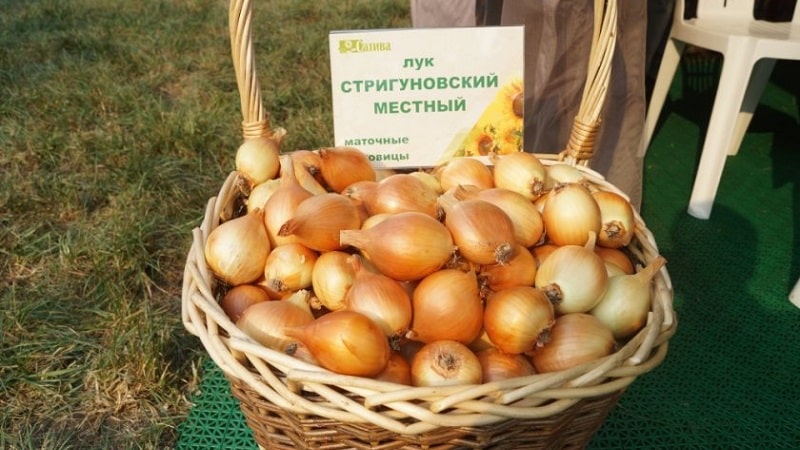
Chemical composition, trace elements and vitamins, beneficial properties
People have been eating onions for several thousand years. Apart from its culinary uses, it is known for its medicinal properties.
This vegetable is rich in minerals, essential oils, phytoncides, organic acids, vitamins C, E, group B, carotene.
With regular moderate consumption of onions:
- strengthens the immune system;
- reduces the risk of acute respiratory viral infections and acute respiratory infections;
- reduces sugar and cholesterol levels;
- keeps blood pressure normal;
- reduces the risk of atherosclerosis and thrombosis.
Onions cleanse the body of toxins and toxins, remove heavy metals, normalizes intestinal function. Scientists have proven that onions contain substances that reduce the risk of prostate cancer. Phytoncides destroy bacteria and viruses and are especially useful in the autumn-winter period.Green onions contain chlorophyll, which strengthens the walls of blood vessels.
Vitamins are contained not only in bulbs and green onions, but also in their peel. Teas and decoctions are prepared from it, useful for improving heart function, having a diuretic, expectorant, and laxative effect. An infusion of the husk will relieve cramps in the limbs, make hair shiny, and slow down the aging process.
Attention! People suffering from diseases of the duodenum, stomach, and kidneys should take it in limited quantities and after heat treatment.
Ripening period
Strigunovsky local refers to early ripening varieties. From the emergence of seedlings to the lodging of the feather, 75-95 days pass.
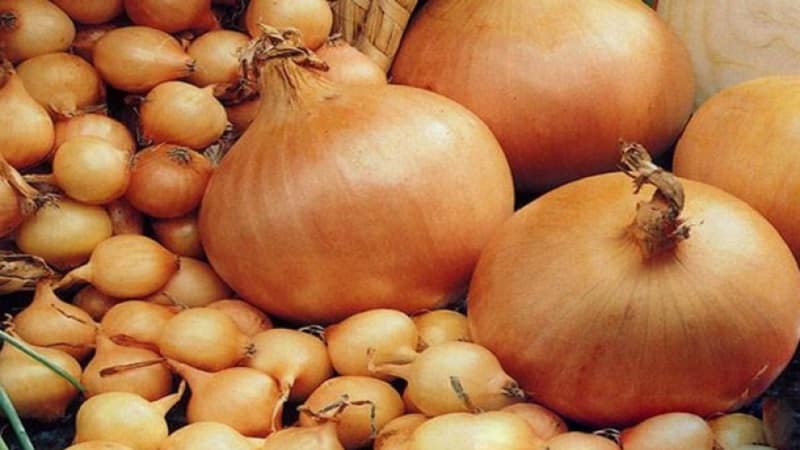
Productivity
Productivity is high, depending on the region and weather. From 1.5 to 3 kg of onions are collected from 1 m².
Disease resistance
Variety has a high immunity to fungal diseases: fusarium, rust, mosaic. It is practically not attacked by harmful insects: nematodes, aphids, moths, spider mites.
Characteristics of the bulb, description of appearance, taste
The bulbs are light yellow, round, slightly elongated at the edges, medium-sized. Average weight – 50-80 g. The pulp is juicy, white, the taste is sharp. Strigunok is stored for a long time, until the new harvest. It is used both fresh and boiled, fried, stewed.
For which regions is it suitable and what are the climate requirements?
This variety can be grown throughout the country. It is recommended for breeding in northern regions, as it ripens before frost. In the southern regions a rich harvest of this variety is obtained.
The main advantages and disadvantages of the variety
Strigunovsky local has an eighty-year history and has a lot of advantages:
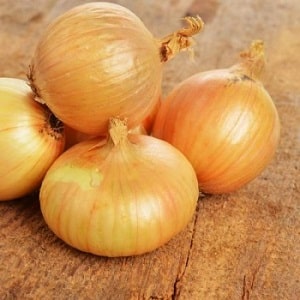 early ripening;
early ripening;- high productivity;
- long shelf life;
- high ripening of bulbs – 49-97%;
- cold resistance;
- unpretentiousness of cultivation;
- universal application;
- growing in a one- or two-year culture;
- possibility of widespread breeding.
Features of the variety - sharp, burning taste.
Flaw – small bulbs when growing local Strigunovsky from seeds.
Differences from other varieties
Strigunovsky produces high yields in the northern regions, has good adaptability compared to other varieties. Productivity is lower than that of mid- and late-ripening varieties.
Relatively small onion - from 50 to 80 g. High degree of safety.
Features of planting and growing
Onions are unpretentious crops. But in order to get a good harvest, you must follow a number of rules and agricultural practices.
Preparing for landing
The site is being prepared for planting in the fall.: dig up, add fertilizers, manure, ash. The beds are made on the illuminated side, on a hill. In the spring, the area is dug up and loosened again.
Soil requirements
The soil should be light, loose, fertile. Pay attention to the plants that grew in the bed before the onions. The best predecessors: tomatoes, cabbage, legumes.
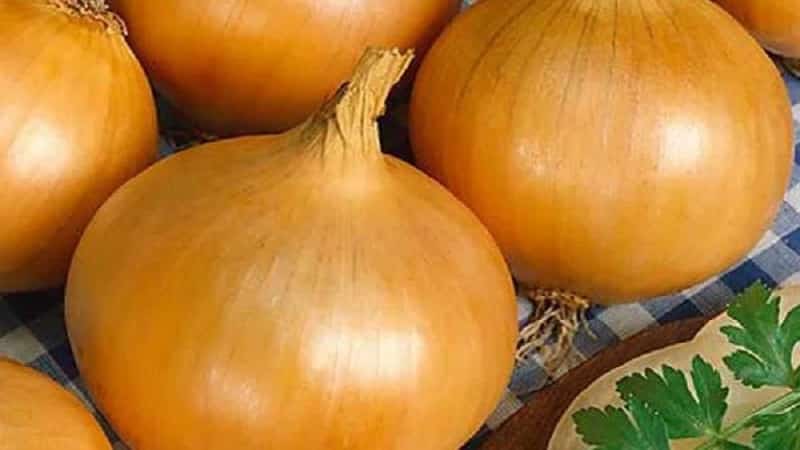
Dates, scheme and rules of planting
Planting times depend on:
- growing method;
- weather;
- region.
With the seedling planting method, seeds are sown in greenhouses at the end of February in the southern regions, in Central Russia, planting begins in mid-March, in the north of the country - another month later.
The sprouts are transplanted into open ground at a soil temperature of +10…+15°C.
Onion sets are planted in open ground at the end of April, in the Volga region - in mid-May, and in the northern regions - in late May - early June.
Sets can also be grown before winter, before the onset of cold weather. The soil temperature should be around +5°C. In the south - in November, in the middle zone - in October, and in the north - from the beginning of September.
Seeds
Before planting, seeds are checked for germination, soak in a solution of potassium permanganate for half an hour, then use means to stimulate growth, for example, “Zircon”.
The seed is dried and planted in special boxes.. Seeds are planted into seedlings according to a 3x5 cm pattern, embedded 1 cm into the ground. The containers are covered with film or glass and placed in a warm room with a temperature above 23°C. With the emergence of seedlings, they are transferred to a cool, bright place. When the soil warms up and the seedlings are hardened, they are planted in open ground. The distance between the rows is up to 20 cm, between the roots - 7-10 cm.
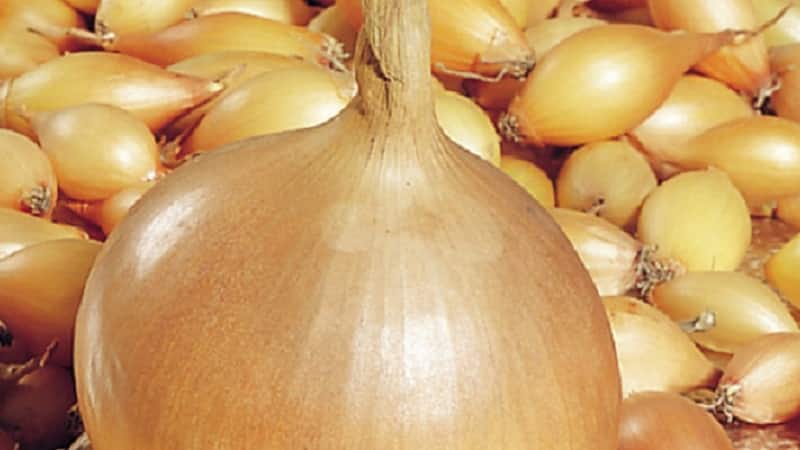
For sowing in open ground, planting material is checked for germination, treated with potassium permanganate, heated for about half an hour at a temperature of 50°C.
Reference. You can use aloe juice and growth stimulants by soaking the seeds for half an hour. The seeds are then dried.
Planted according to the 1x15 cm pattern, embed to a depth of 2 cm.
To make the seeds germinate faster, cover them with film.. When the sprouts appear, the cover is removed.
Sevok
For sowing, use bulbs with a diameter of 1-2 cm. They are warmed up several days before sowing and treated with fertilizer solutions or growth stimulants. For disinfection, use a solution of copper sulfate - 30 g per bucket of water. The sets are dried and planted at a distance of 10x20 cm. The bulbs are sealed so that the tops are visible from the ground. Plantings are watered and mulched with dry peat.
Winter plantings Produced with dry seedlings without treatment, planting material is planted to a depth of 4 cm and mulched.
Features of cultivation
Onion - biennial crop. In the first year, sets are grown from seeds. The next year, the seedlings are planted and full-fledged bulbs are obtained.
To get a better harvest, use seedling method.
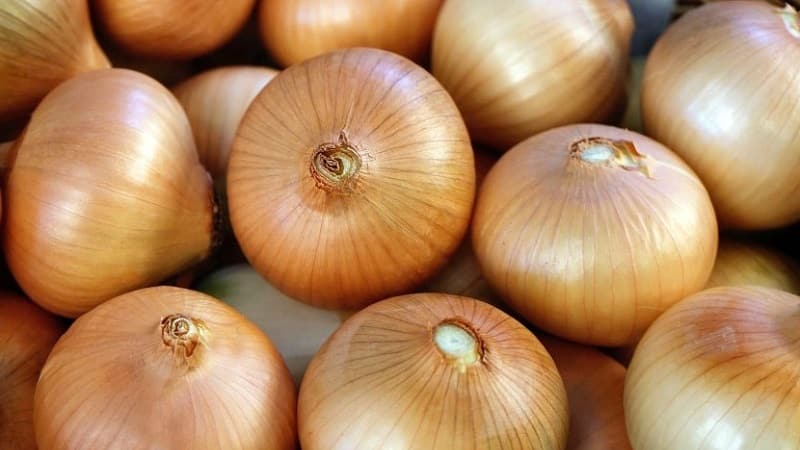
Seedlings are thinned out when the first leaves appear. Seedlings should be 2 cm apart from each other. The second thinning is carried out with 4 feathers, planted at a distance of 6 cm.
Nuances of care
Care for Strigunovsky onions in the same way as other varieties. To get a large harvest, the soil is fertilized, watered, loosened, and weeds are controlled.
Watering mode
Watering onions about once a week, depending on the weather. During the dry season, the frequency of watering is increased. A month before harvesting, they stop watering the onions. After watering, the soil is loosened and weeded.
Loosening the soil, weeding
Care consists of frequent weeding and loosening of row spacing.. Loosening retains moisture in the soil, provides air to the roots, and removes crusts on the surface of the earth after watering and rain.
Top dressing
With the appearance of feathers, you can begin feeding the crop. Apply fertilizers 2-3 times per season, use mineral and organic agents:
- The first feeding is done with a solution of nitrate or manure. The proportions are as follows: a box of saltpeter per 10 liters of water or 1:10 for a folk remedy. Use 3 liters per 1 m².
- The second feeding is carried out with a solution of “Nitroammophoska” - 2 tbsp. l. fertilizer in a bucket of water. The consumption is the same as in the first case.
- At the time of turnip formation, a mixture of fertilizers is used - 10 g of potassium sulfate, 1 glass of ash, 20 g of superphosphate per 1 m².
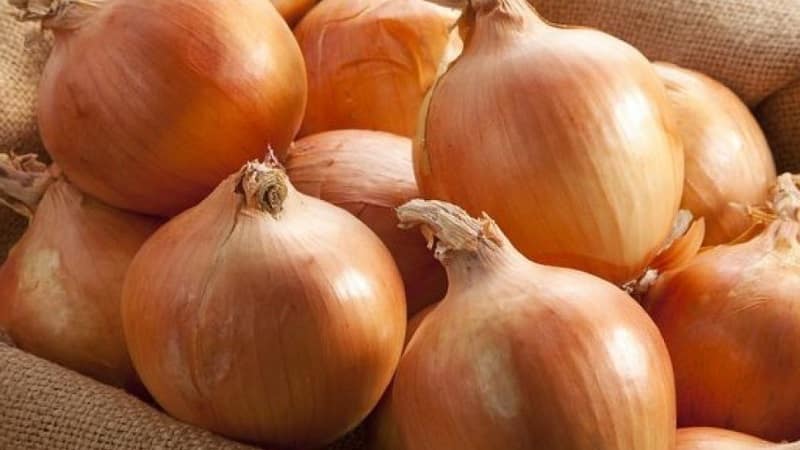
Disease and pest control
Strigunovsky is resistant to a number of fungal diseases and pests, but can be affected by powdery mildew, white rot, neck rot, and suffers from onion midge.
To fight flies the beds are treated with Tabazol, pollinated with ash, and watered with a solution of potassium permanganate once a week. The onion fly cannot stand the smell of carrots, so planting it next to onion beds or alternating rows of carrots and onions gives good results.
When downy mildew appears reduce watering of plantings, use ash and sulfur solution - 60 g per bucket of water. Avoid fertilizing with nitrogen fertilizers.
To prevent downy mildew Fitosporin-M and Ridomil Gold are used once every 20 days. Whey has proven itself well: it is diluted with water 1:10 and sprayed on the greens.
To prevent infection by different types of rot fungicidal drugs are used.
Important! For prevention during the formation of heads, onions are treated with a solution of “Effecton” or copper sulfate.
Harvest and storage
Strigunok matures in about 3 months. If the tops lay down, begin to dry, or turn yellow, it’s time to start cleaning.
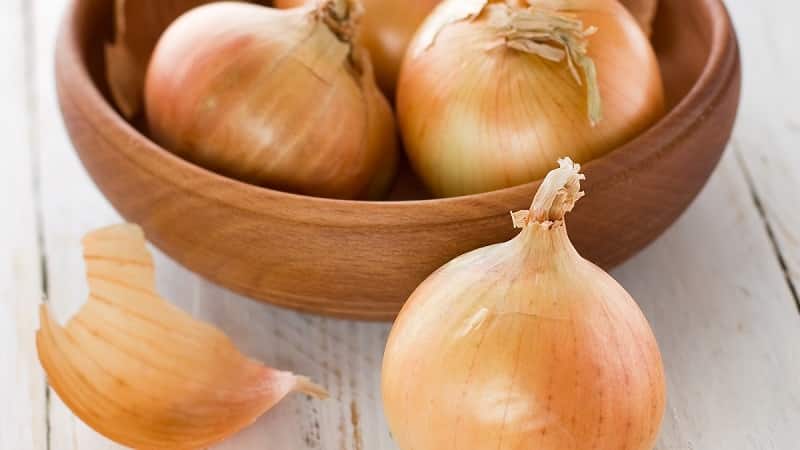
How and when to collect
If necessary, culture ripening is accelerated. To do this, the greens are broken off within two weeks.
Harvest the bulbs in dry weather. You can use a fork or pull it out with your hands. The harvested crop is then dried in the shade for about two weeks.
Storage features, keeping quality of the variety
After drying, the onions are sorted and sorted. Trim the dried feather to a height of 7-10 cm. Store in a dry, well-ventilated area at a temperature of 18-20°C. In houses, pantries and kitchens are suitable for this purpose. The bulbs are placed in nets or paper bags. You can use the folk method - weave an onion braid and hang it on the wall.Strigunovsky lies well and retains its properties until the next harvest.
Sevok stored at +10°C and humidity 75% in a well-ventilated area.
What difficulties may there be when growing
You can't go wrong with the landing dates. If in early spring the onions were planted late, in well-warmed soil, there will not be a full turnip harvest. Due to the large amount of greens, the bulbs will be small.
If you were in a hurry with planting, then the sowing and seedlings may be damaged by frost. The first shoots should appear a week after sowing. In rainy weather, onion plantings are affected by fungal diseases.
Advice from experienced gardeners
To increase productivity, experienced gardeners advise:
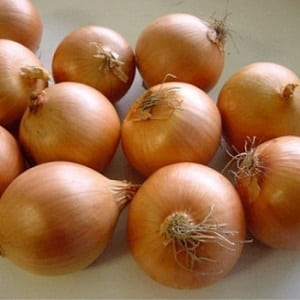 Choose a place for onion beds in advance. Pay attention to the ground. If the soil is clayey, add a mixture of peat and sand. If the soil in the area is acidic, add dolomite flour to deacidify. Carry out all operations in the fall.
Choose a place for onion beds in advance. Pay attention to the ground. If the soil is clayey, add a mixture of peat and sand. If the soil in the area is acidic, add dolomite flour to deacidify. Carry out all operations in the fall.- Before planting, keep the seedlings for about three hours in a saline solution (1 tablespoon per 1 liter of water), rinse, then immerse in a solution of potassium permanganate for 2 hours.
- Trim the tops of bulbs before planting to promote rapid plant growth.
- When planting, sprinkle a little salt between the rows and you will save young seedlings from onion flies.
- Do not use fresh manure or compost for onions.
- When the first feathers appear, the onions are watered in the following way: first with water, then with ammonia solution (2 tablespoons per bucket of water). The next day, regular watering. Repeat after ten days. Using the same scheme, you can water with ordinary salt (30 g per 1 liter of water) and a solution of potassium permanganate. These products will help prevent onion midges.
- You can feed the onions with yeast.After watering, use a yeast solution - 100 g of yeast per bucket of water, let it brew for 3 hours.
Reviews of the onion variety Strigunovsky local
Reviews from gardeners describing the Strigunovsky variety are only positive.
Stas, Moscow region: “I have been growing Strigunovsky for many years and will not give up this variety. I like that it ripens early and has compact heads, as in the photo on the Internet. I love its spiciness, which is great for salads and other dishes. Stored until July".
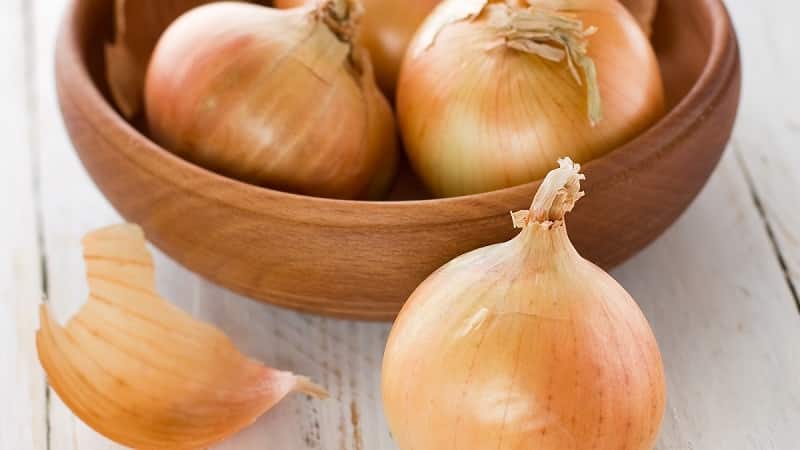
Zhenya, Voronezh region: “I advise all gardeners to grow this variety. I tried growing many varieties and settled on this one. It grows quickly, forms bulbs quickly. Unpretentious, tasty. The bulbs are larger and less sharp than Bessonovsky. With a harvest in any year".
Andrey, Chelyabinsk: “The germination rate is good. Keeps for a long time. Can be used for onions and as sets. I advise everyone. You can't go wrong".
Conclusion
Onions of the Strigunovsky variety are the choice of many gardeners. It grows successfully in areas with mild and harsh climates, has a high germination rate, produces a good harvest and is stored for a long time without losing its taste. When growing, it is enough to follow basic care recommendations and protect the plantings from pests and diseases using available folk remedies.